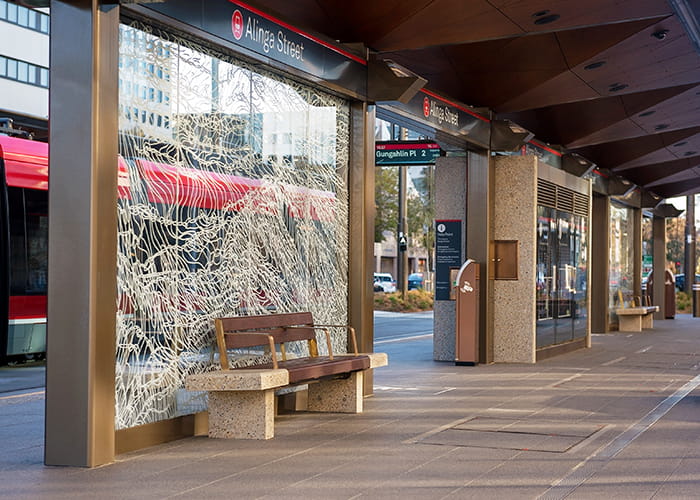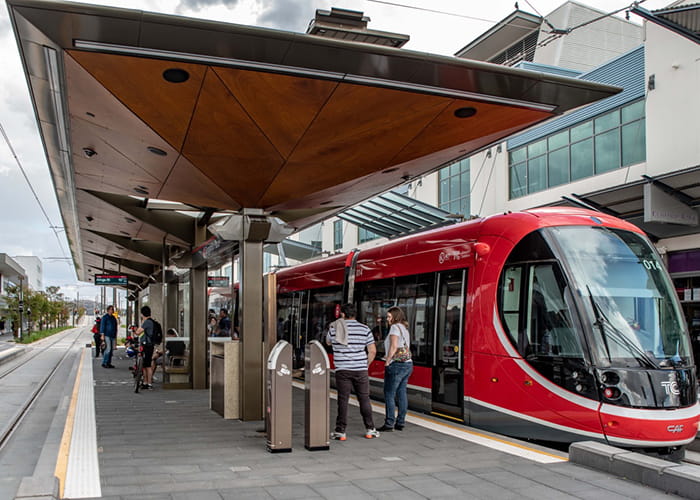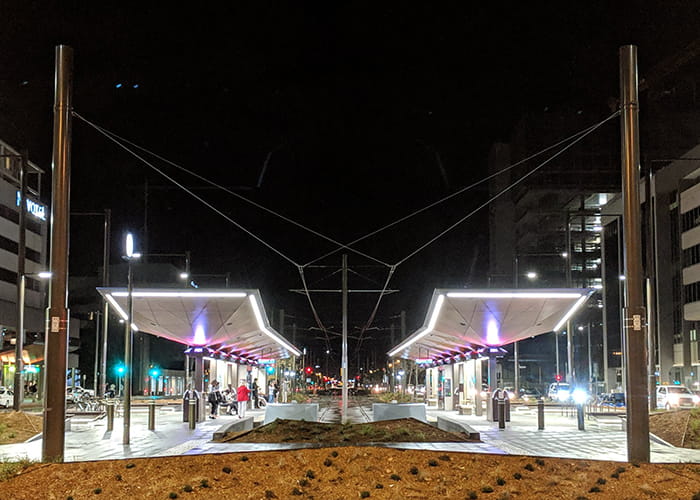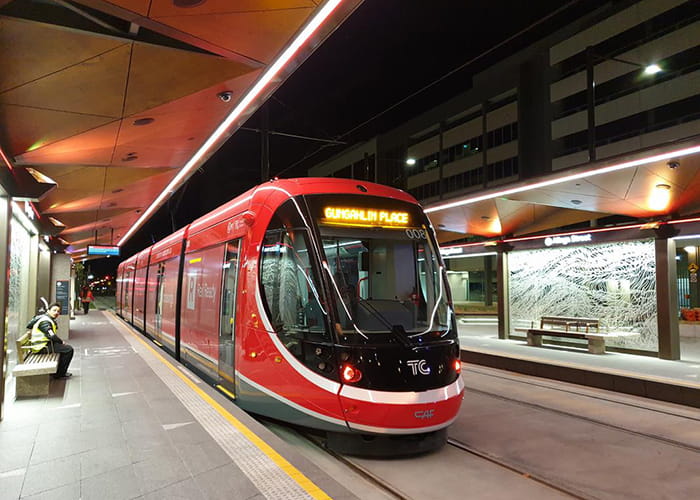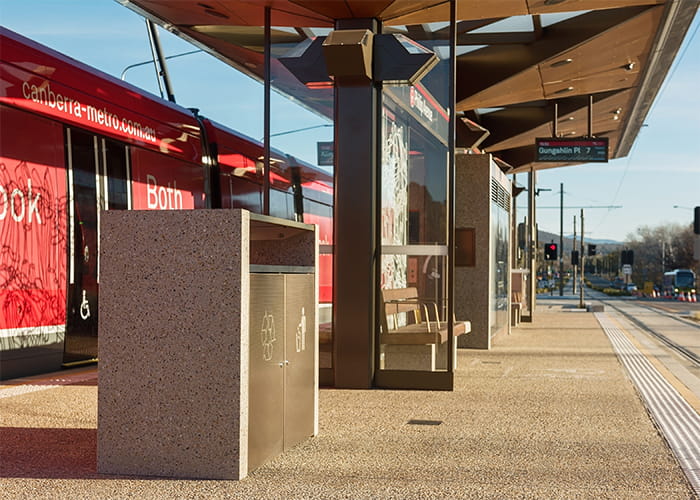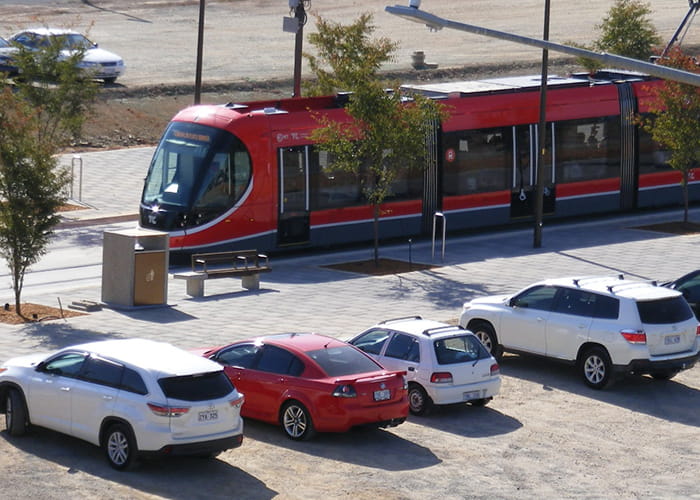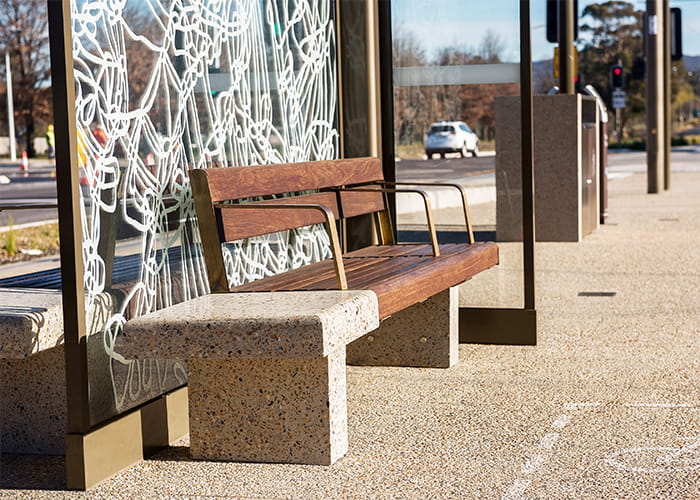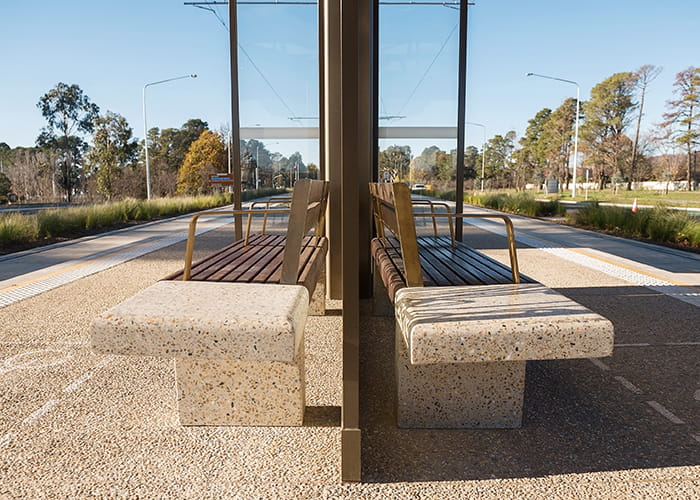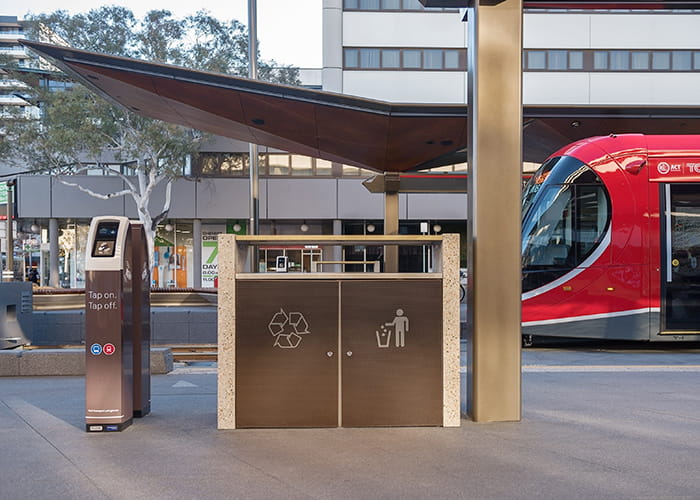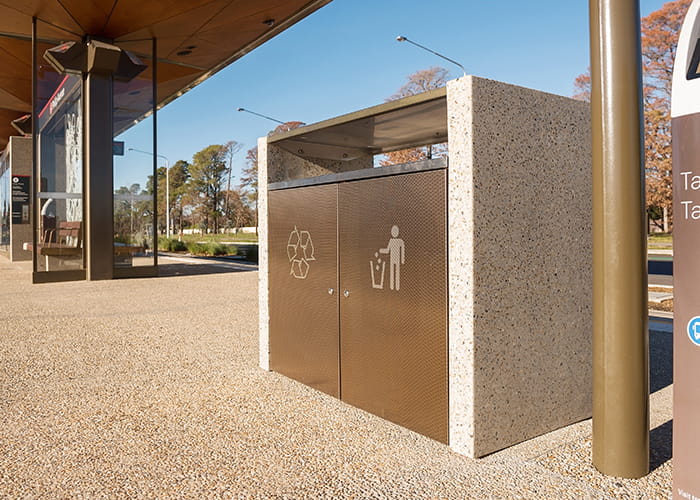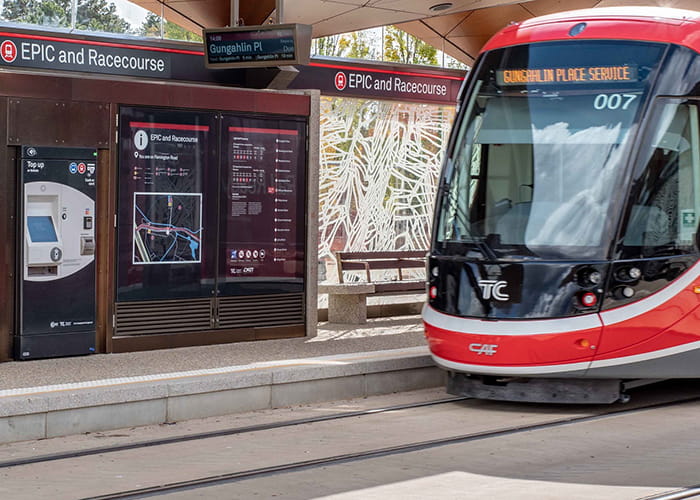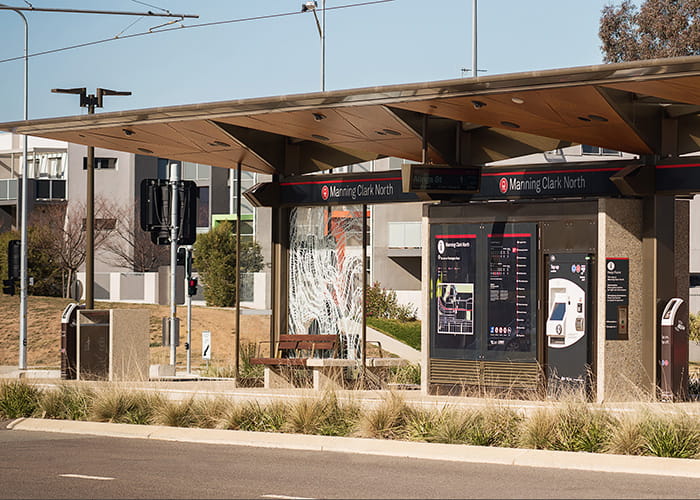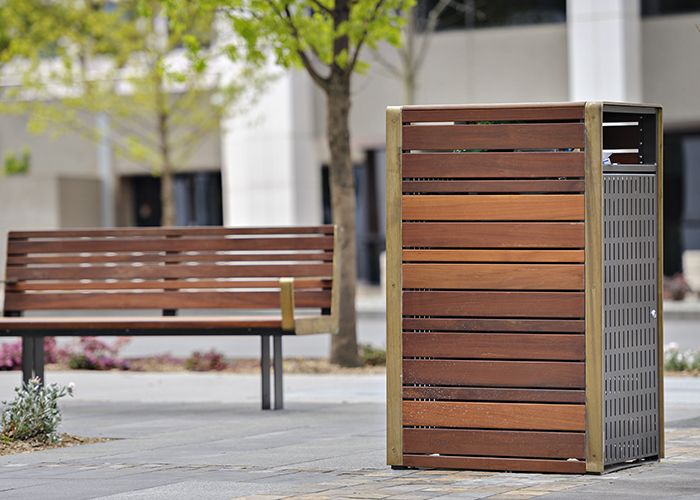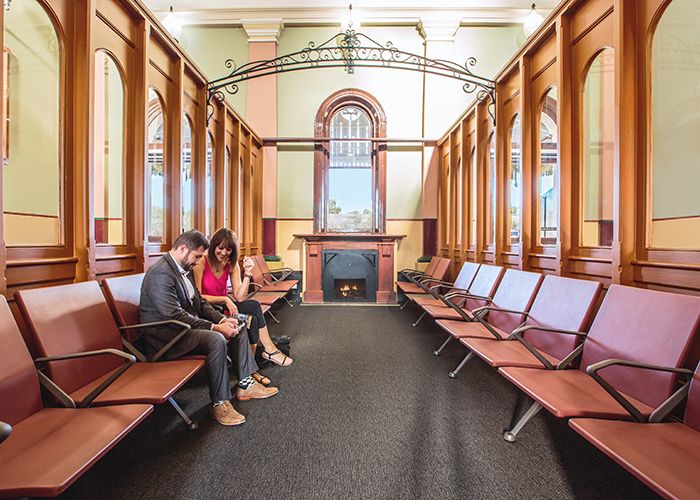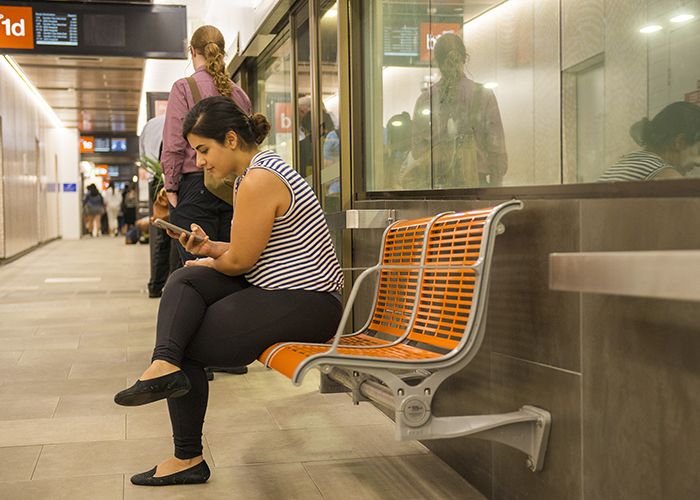The first stage of Canberra’s new Light Rail connects Gungahlin, through Dickson to the City, with 13 stops along the 12km track.
The stops have a distinct architectural form, says designer Architectus, that will make “a significant contribution to place-making along the network.”
“They will be significant landmark structures. The materials and finishes are consistent with the stature and quality of other key landmark projects in the National Capital,” they say.
“We have designed the Capital Metro Project for Canberra, delivering civic dignity and pride and a quality of public space equal to Canberra’s most important public and cultural projects.”
A custom furniture suite, also designed by Architectus with additional support and manufacturing by Street Furniture Australia, is installed at each station.
Premium materials, including polished exposed aggregate concrete by Sydney Precast and brass detailing, elevate each space and resonate with furniture around the Capital.
“The Australian War Memorial is a key reference for understated and timeless design, offering inspiration for Canberra Metro’s urban and landscape design and the use of bronze and warm natural tones, durable materials which weather attractively, and sustainable native landscape design,” say the architects.
The brass arms on each seat were engineered in the early stages of the design for vandal-resistance.
Architectus specified Australian Spotted Gum timber for the seat battens – an investment in the comfort of passengers in Canberra’s cool climate, as they require a regular program of oiling and care.
Many seats are installed in front of glazed dividers featuring artwork by Hannah Quinlivan, a continuous pattern of white lines that represent human movement in Canberra’s landscape.
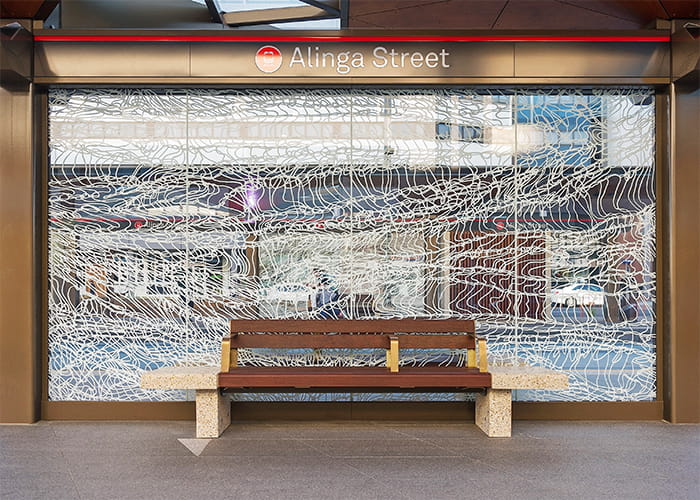
Unique stations: artwork by Hannah Quinlivan adorns dividers.
The custom bin enclosures feature etched sheet metal doors by Steel Color in Italy, and a precast concrete housing.
The frame is powdercoated in a tailored Eternity Bronze Pearl, matching the overhead wire poles for a cohesive palette and design.
Crowds gathered to test out the Metro on its launch date, 20 April 20 2019, with 30,000 estimated to ride during its first day.
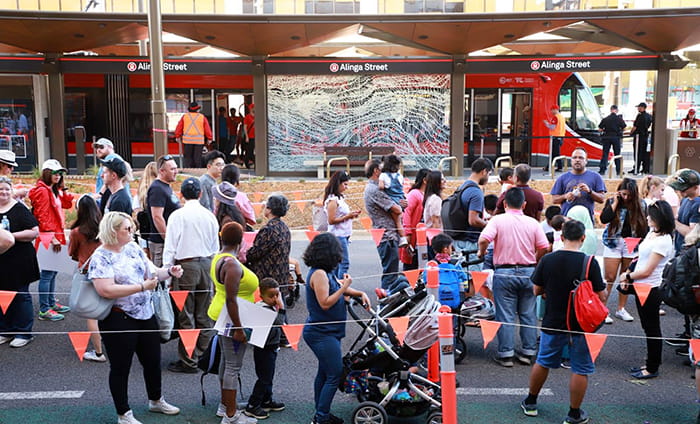
Crowds gather on opening day.
